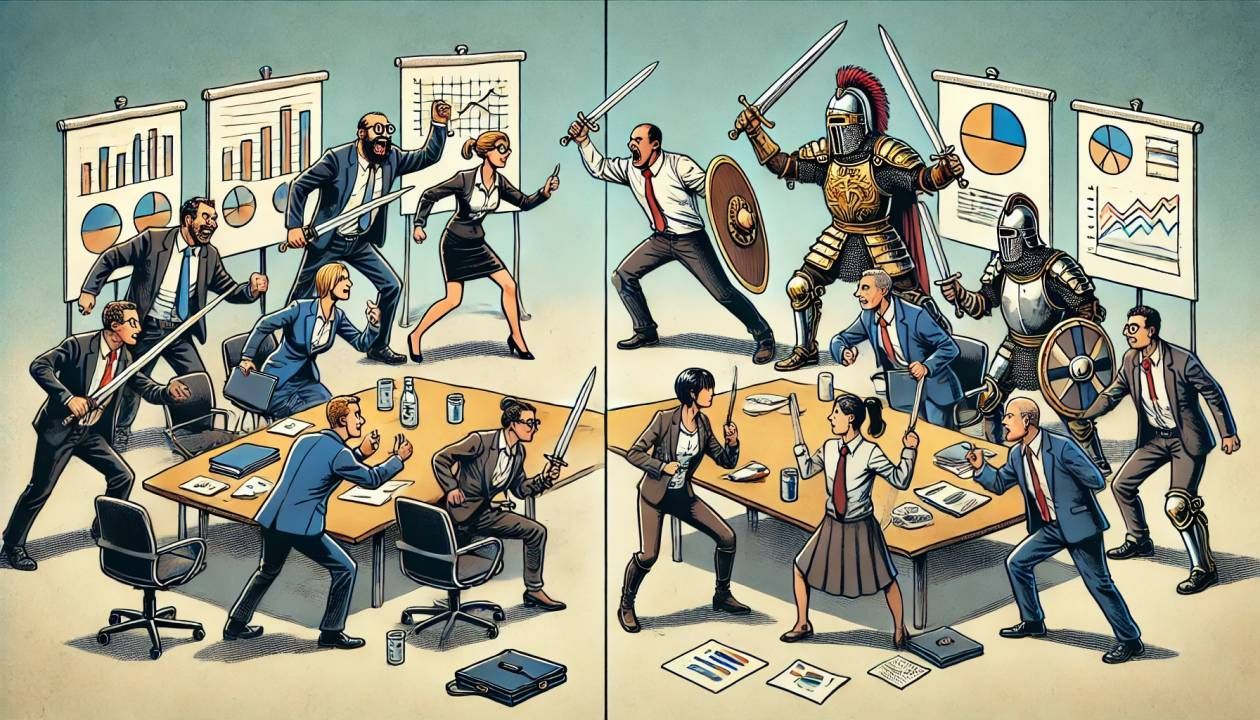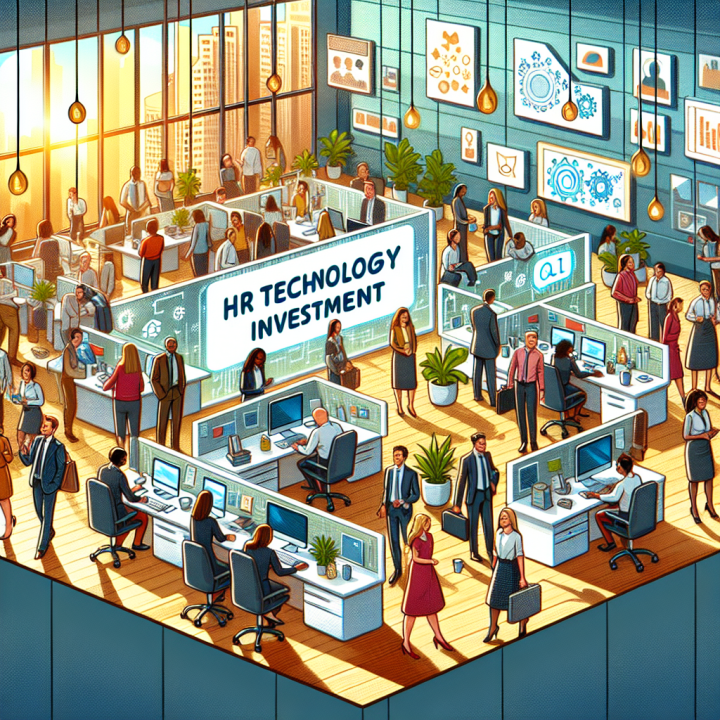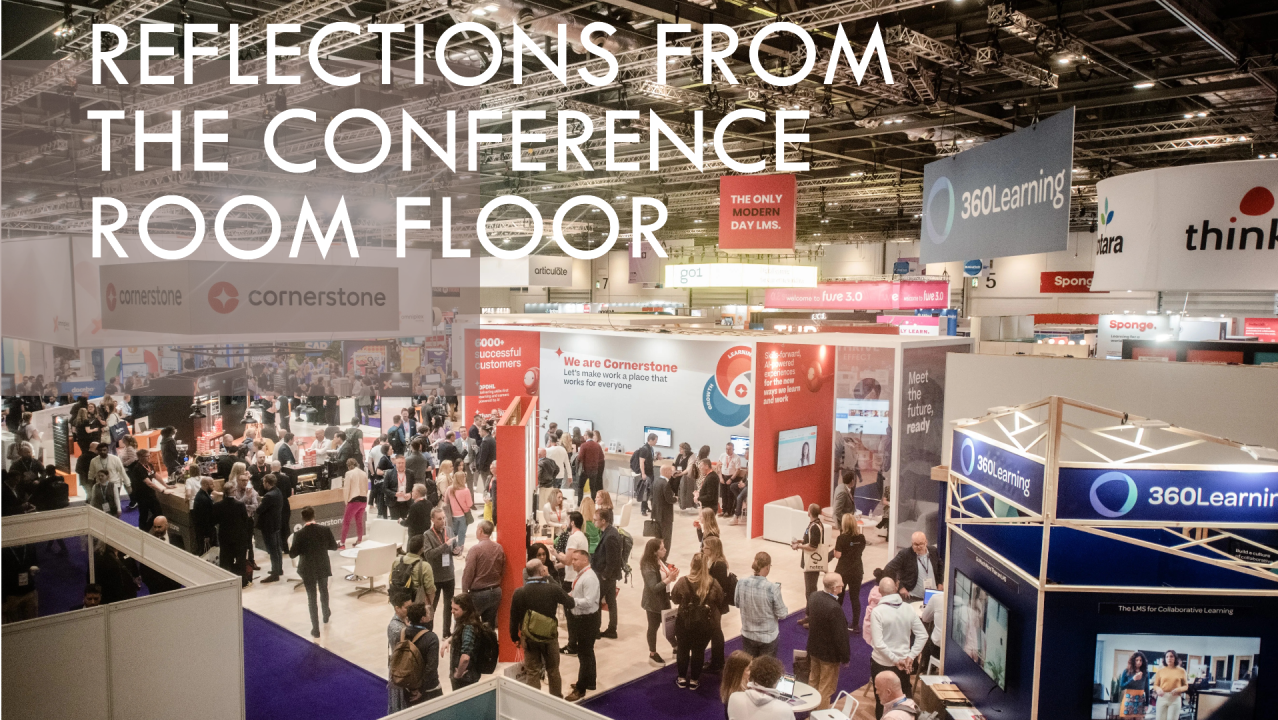Get in touch

December 3, 2024
In the final part of the 'Are you getting value from your HR tech investment' we look at leadership. Leadership has been a common thread throughout the series but deserves a discussion all of it's own. The alarmingly high figures of those transformations which fail to deliver on expected outcomes (the figure ranges between 70% to over 90% across various research McKinsey , BCG , Bain & Company ), the one consistent theme is leadership. Whether it's having a clear direction, having the right skills in the organisation (including the leadership), securing the right resources or overcoming internal resistance, the process can seem overwhelming. This is where strong leadership comes into play as the anchor that can weather those storms or indeed be the compass that shows direction, particularly after you have gone live as change is continual and doesn't stop. Visible Advocacy for Change There are the 'hard' demands of a leader, such as budgets, resources etc. but actually let's start with the 'soft' skills needed to promote and keep the momentum of change. The role a leader plays in technology adoption is being visible advocates for change. When leadership demonstrates their commitment to integrating new technologies, it sends a powerful message to the entire organisation. Employees look to their leaders for cues, visibly supportive leaders help to alleviate fears and uncertainties. This is particularly important once the programme has gone live or moved into a BAU state. The programme provides visibility for the initiative but once that moves on then as a leader continuous championing of the benefits and ongoing change is important. Remember leaders and leadership exists at all levels within a business and not just as a senior leader. Managers and employees should also be advocates and this is often where it is most effective. However, behaviour is mostly driven by senior leaders and the trickle down effect of positive advocacy, intention and action. Commitment and Resources Advocacy is not just about words; it’s about actions. Leaders must ensure that they are providing the necessary resources to facilitate this transformation. This includes allocating budgets, providing training, and ensuring that there is adequate support for troubleshooting and problem-solving. When employees see that leadership is backing warm words with actions, they are more likely to buy into the new technology and the change that accompanies it. But commitment goes beyond budgets, it's about being present, supportive and vocal. Again this tends to happen more in the midst of a delivery, but actually needs to continue after go live and is key to being active in creating the right environment to get the value from an investment long term. Aligning with Business Drivers

November 10, 2024
Part 2 - Do you feel like you are getting short-changed on your HR Tech investment? In the last article we looked at Setting up for Success and Utilising what you have bought as a start point for gaining value from your investment. In this one we will move to look at those Technology Vendor Relationships which can often be messy and tricky to untangle once they start to go wrong but they are relationships worth the time and investment. The Importance of Engaging with Your Technology Vendors Your relationship with your technology vendors shouldn't end after the sales process and like every relationship it takes time and investment from both sides. I often feel more marriage counsellor than consultant, as there are two sides to every relationship, but I am only going to talk about the side you control as a customer here, as obviously if a partner or vendor goes rogue, then that is a very different issue. If managed well then they can sustain for long periods of time and should evolve into a partnership which yields value above what you might anticipate. Pre and Post selection - Building and Maintaining Strong Vendor Relationship There is a whole article alone to talk around the pitfalls whilst going through a selection process, but the critical point is that the type of engagement with a vendor is often set during the procurement phase. This can be difficult to turn around if it is too adversarial or in fact if it is too distant. Including engagement with leadership in your business (more on that later). A good vendor relationship post Go Live starts with: Post Go Live Onboarding - to understand key operational areas such as; how they are structured and how this structure aligns to your internal operational teams. And don't leave it until you have gone Live. Start this process in advance to iron out the issues. How support works - to manage inevitable bugs, issues and errors, particularly around regular updates and upgrade process. Roadmap and upcoming features - What mechanisms are in place to understand new capabilities/features which you could align with your roadmap to meet your business goals and the business case which the transformation was likely built upon. Above all a be proactive. A proactive approach benefits both parties, fostering a partnership based on mutual growth and improvement. Communication; Schedule Check-ins they are Essential Don't wait for issues to arise before contacting your vendor. Regular reviews between operational and also semi-regular leadership meetings, will help address potential problems early and keep your vendor informed about your evolving needs. These meetings should be scheduled consistently to discuss performance, upcoming updates, and any changes in your business requirements. If they aren't offered as part of the approach with a vendor then set them up yourself. Don't wait to be offered. Participate in User Groups, Customer Communities and online content The user groups and webinars are excellent opportunities to learn about best practices and new features directly from the vendor and other users. The customer communities can offer a wealth of knowledge for users who are themselves evolving their solutions or running into the same issues, use the power of the crowd to get issues resolved. Encourage your team to participate in the events which keeps everyone informed and engaged. Leadership Engagement and Tech Vendors Leadership plays such a pivotal role in the success of HR technology implementations and the Vendors know this. Leadership engagement is a currency in the Vendors eyes as a commitment to promoting and growing the relationship, as well as the use of the solution within the organisation. It cannot be understated. The most successful transformations involve leadership engagement with the vendor. People leaders and CIOs should actively participate. Do not leave this solely to your teams as it can be a sign for the vendor that you are not serious about this investment, so will be come more transactional rather than a partnership. None of the above is to say that you shouldn't be holding the vendor's feet to the flames when needed, but it should be used as an exception rather than a rule and this type of engagement will make it so much more effective. Takeaways In every successful transformation, nurturing the relationship post purchase with a vendor can be make or break in supporting the ongoing value you could be achieving from your HR tech. It is an element which is so often missed as a factor of success, and isn't realised until it was too late and as with most relationships, once they are broken they are hard to recover so to try and avoid this start with: Being Proactive - Push to understand how to engage and align where you can in your teams on the best ways to leverage the relationship. Communicate - Consistent communication ensures that you continue to invest in the relationship, stay updated on the product roadmap, and receive the support needed to adapt the technology to your business needs. Leadership Engagement - the relationships at the top will often set the tone for ongoing relationships elsewhere in the teams. Remember these are the ones that can add value on your investment. This capital is also one you can draw down on in the trickier times. Creating a successful HR technology transformation is a collaborative effort. A good relationship can yield value beyond the investment as it is the additional value derived from long term engagement in good and tough times which will support gaining value beyond the pounds and pence. Ready to take your HR tech investment to the next level? Get in contact to discover how we can help you maximise your technology's impact.

October 14, 2024
I was lucky enough to drop by both the techUK and CIPD Festival of Work events this week, both excellent, and certainly will be heading back next year. As you'd expect other than the space race for more elaborate stands (my favourites being mini golf and seeing my terrifying realistic holographic digital twin), AI presentations, demos and chat were everywhere, particularly GenAI. Speaking to a few of people at the events though, including some vendors, it struck me that there was increasingly a misconception or association that AI means Gen AI. Now this won't be helped by the likes of the Apple product launch this week including Gen Ai across it's products (I can't wait to generate my own emojis....) but its worth taking a step back just to look at what Gen Ai is useful for in an HR context and where it isn't. The same was true a few years ago when every new product needed machine learning as part of a core offering. GenAI and tools like Chat GPT are often lauded for their ability to generate human-like text and streamline various tasks. However, it’s crucial to remember that generative AI is just one type of AI among many. The field of AI is broad, encompassing diverse techniques such as rules and heuristics, optimisation, simulation, data visualisation, and non-generative machine learning. As an HR team do I really need to know? Well, yes! As we will see having transparency is key and not all AI is equal or appropriate, and while our trusted software vendors and partners will be focused on delivering new AI capabilities in the coming years, it's crucial to delve deeper to gain a better understanding also as it will become apparent there is still preparation and thought as to how to deploy it rather than just switching it on. So for HR professionals and business owners, knowing when not to use generative AI—and considering alternative AI approaches—is essential. Here’s why: The Limitations of Generative AI Context-Specific Solutions Generative AI excels at producing text based on patterns in large datasets. It’s perfect for drafting emails or generating content ideas. However, it falls short in specialised contexts where domain-specific knowledge is crucial. For instance, making complex HR decisions based on nuanced employee data might require a more tailored approach, such as rules-based systems or simulation models. Accuracy and Reliability Generative AI can produce impressively coherent text but may sometimes generate plausible-sounding yet incorrect information. This is a significant limitation in scenarios where accuracy is paramount, such as compliance and legal documentation within HR. In such cases, a combination of data visualization and non-generative machine learning might offer more accurate insights. Lack of Explainability One of the critical drawbacks of generative AI models is their "black-box" nature. They offer little insight into how they arrive at specific outputs. For HR teams needing transparency is paramount in decision-making, especially in regulated industries. Rules and heuristics-based systems provide a more explainable and trustworthy alternative.

September 9, 2024
Investing in HR technology can be a game-changer, but only if it's done right. Many of the conversations I have with clients, there always seems to be either a nagging doubt, or worse, despair at why their HR tech isn't working and not yielding the value that was presumed, and then not really knowing where to start to try and remedy it. With so many options on the market, competing internal priorities and varying degrees of being 'transformation ready', it can be easy to get overwhelmed and make mistakes that can cost time and money. Here are some areas to target steps to ensure you’re making the most of your HR tech investment. In the first of two articles we look at the Set up for Success and Utilising what you have bought.

May 21, 2024
A few days have passed since the HR Technologies UK , and reflecting on what was a great event as it provided an opportunity not only to see some great new tech but also catch up some familiar faces. Like most events it’s made by the people and the enthusiasm which comes from this group of dedicated and loyal tech lovers. A tale of two conferences It was clear the two sides of the conference hall mirrored exactly where we stand right now. On one side, the HR tech folks were a bit more reflective, tackling big issues on tight budgets and figuring out how to get the most out of their investments. On the other side, the learning tech crowd was all abuzz, with thoughts of the future without some of the larger enterprise questions at hand…. HR Tech There is a clear focus on value and optimisation. We're still in a space race where new features and functions are being added at a rate of knots , and that is pretty clear from what many vendors are doing to continue to differentiate themselves. However, the push to get more out of what we already have is stronger than ever. Budgets are tight, and HR teams are constantly being asked to stretch them further. I get the distinct impression from most vendors that they would love customers to actually be able to deploy all the wonderful features they provide in quarterly updates, let alone the advances they are making, but many customers aren't always equipped to embrace those advancements. Chatting with customers, I kept hearing things like 'I'm not sure we're getting our money's worth,' 'definitely a lot of lessons to learn from what we have done before,' and 'I wouldn't do it that way again' . Plus, a bit about whether the first round of transformation really paid off like they hoped. In some cases, it was round two, and they were still facing tough lessons, like issues with process design, changes to the operating model, data problems and jaded stakeholders. Did we lay the right foundations for the implementation before we started? A question at the forefront of many peoples minds. The task isn't getting easier for HR teams with an ever expanding set of demands and if anything it is getting harder. The breadth of topics HR teams are still attempting to get their heads around such as skills and becoming a skills based organisation, creating that perfect EVP, employee wellbeing and are we doing enough around DE&I? That was reflected in some great seminars and key notes but there are now so many demands out there and knowing what to focus on will be key. Guess what? There's a tech solution for all of this! It might seem like the answer is to implement technology to fix these issues, but that's not always the right answer. I've noticed a lot of tools purchased to address these problems are underused or not properly integrated into companies' ecosystems. This ties back to the previous point about value. If data, experience or technology ecosystems are disconnected, leading to duplication or fragmentation, any perceived value will be temporary. The dreaded two letters. It wouldn’t be a blog post on HR tech without mentioning those two letters would it? I have avoided it up to now…..but in short I don’t think there is anything that has substantially changed on the surface. Obviously AI and it’s broader revolution is moving at a pace, but since last year we are still talking around many of the same use cases. Vendors are focusing more on the infrastructure and orchestration in order to accelerate the possibility AI will bring and we are now refining the use cases in HR. Figuring out what keeps those use cases close enough to a human experience without it feeling like we are handing the keys and humanity to the machine to manage our work and our people. I think the best encapsulation is ‘I need AI to prompt me, but not take me out of the equation entirely’. Learning Tech Learning tech side of the conference was buzzing with the latest, greatest examples of where focused artificial intelligence can support learners and learning teams. There was a real passion which I often find with the learning community and that is awesome. Progress progress progress...... Whether it's progress in VR/AR, smarter skill marketplaces, or more advanced content creation, the practical applications are clear. It highlights how machine learning is being used to analyse data and provide insights, guiding actions in a way that's becoming common in many vendors' future plans. The discussion centred on 'narrow AI' use cases rather than 'general AI'. Specifically, it was about designing an intelligence aimed at a particular task. Whilst this is similar to the broader HR market and other markets in the past there was a general statement around ‘yep, we got AI in the platform’ but little to actually show. But the learning market is forging ahead with real world benefits. My top pick for conference buzzword bingo was " AI hallucinations " – a term that last year would've made folks wonder how much caffeine the speaker was on. This year? The audience nodded along sagely in agreement. I suspect some of these vendors in the learning landscape will be consumed by those on the other side of the conference floor in time, as the market grows, contracts and consolidates. Maybe there is something in actually bringing together the Learning and HR tech sides of the floor to integrate them more, (an issue often faced by organisations internally trying to connect their own learning landscape into the HR landscape………) But what is clear that: Value is paramount and budgets are under massive scrutiny, optimising the investment is key. Learning tech is still forging new ground and is really bringing a lot of value to customers. But it is part of the equation and beware as to how this will fit with the broader HR ecosystem. HR is still being asked to do more, on tighter budgets with a shorter timelines to deliver and be everything to everybody......Easy eh! Whilst these themes haven't changed massively since last year, this market is becoming an increasingly tricky one to navigate. All exciting stuff though as it can still give value, and the conference is a great opportunity to try and consume it all in one place. I look forward for HR and Learning Tech 2025. If you want insight or advice on making the most of your investment in HR tech or navigating the market please do get in contact.
Blog
Sign up for updates and useful insights
Contact Us
Thank you for contacting us.
We will get back to you as soon as possible.
We will get back to you as soon as possible.
Oops, there was an error sending your message.
Please try again later.
Please try again later.
Sing up to get the latest updates and valuable insights delivered straight to your inbox.